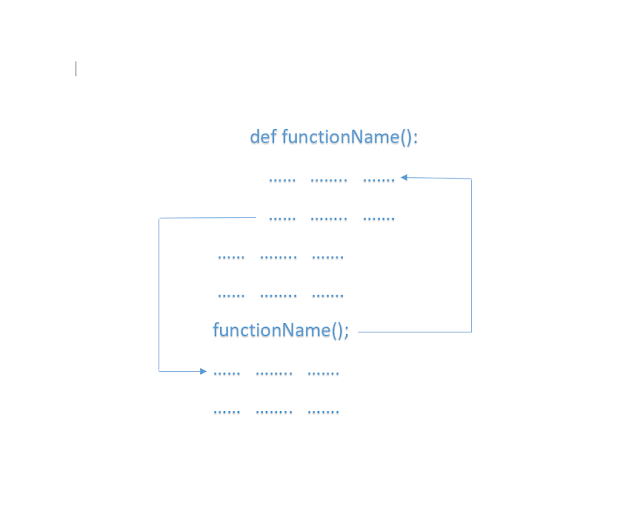Python Functions
In this article you will learn about the functions of python. What they are, how to define them, how they works, syntax, components, types and how you can make your own function.
First of all you will see what is a function actually :
Furthermore, it avoids repetition and makes the code reusable and easy.
Now see the Syntax of a function :
def function_name(parameters):
"""docstring"""
statement(s)
First of all you will see what is a function actually :
Furthermore, it avoids repetition and makes the code reusable and easy.
Now see the Syntax of a function :
def function_name(parameters):
"""docstring"""
statement(s)
- Keyword
defthat marks the start of the function header. - A function name to uniquely identify the function. Function naming follows the same rules of writing identifiers in Python.
- Parameters (arguments) through which we pass values to a function. They are optional and depends on you.
- A colon (:) to mark the end of the function header. We can start from next line.
- Optional documentation string (docstring) to describe what the function does.
- One or more valid python statements that make up the function body. Statements must have the same indentation level (usually 4 spaces).
- An optional
returnstatement to return a value from the function.
Now lets see some Examples :
def greet(name):
"""
This function greets to
the person passed in as
a parameter
"""
print("Welcome, " + name + " in codedudle !")
Lets move forward !
How to call a function in python ?
Once we have defined a function, we can call this from another function, program or even from the Python prompt. To call a function we simply type the function name with appropriate parameters.
>>> greet('Bikki')
Welcome, Bikki in codedudle !
Note:
Try running the above code in the Python program with the function definition to see the output.
def greet(name):
"""
This function greets to
the person passed in as
a parameter
"""
print("Welcome, " + name + "in codedudle !")
greet('Bikki')
Docstrings
The first string after the function header is called the docstring and is short for documentation string. It is briefly used to explain what a function does because by the help of its multiple line format.
Although optional, documentation is a good programming practice. Unless you can remember what you had for dinner last week, always document your code.
In the above example, we have a docstring immediately below the function header. We generally use triple quotes so that docstring can extend up to multiple lines. This string is available to us as the
__doc__ attribute of the function.
For an Exapmle :
Try this code in your python console
>>> print(greet.__doc__)
This function greets to
the person passed in as
a parameter
The return Statement
The return statement is used to exit a function and go back to the place from where it was called.
Syntax of return :
return [expression_list]
This statement can contain an expression that gets evaluated and the value is returned. If there is no expression in the statement or the return statement itself is not present inside a function, then the function will return the None object.
For example:
>>> print(greet("May"))
Hello, May. Good morning!
None
Here, None is the returned value since greet() directly prints the name and no return statement is used.
def absolute_value(num):
"""This function returns the absolute
value of the entered number"""
if num >= 0:
return num
else:
return -num
print(absolute_value(2))
print(absolute_value(-4))
output :
2
4
Here is the explanation how the function() works in python :
Scope and Lifetime of variables
Here it comes ,The Scope of a variable is the portion of a program where the variable is recognized. Parameters and variables defined inside a function are not visible from outside the function. Hence, they have a local scope.
The lifetime of a variable is the period throughout which the variable exits in the memory. The lifetime of variables inside a function is as long as the function executes.
They are destroyed once we return from the function. Hence, a function does not remember the value of a variable from its previous calls.
Here is an example to illustrate the scope of a variable inside a function.
Lets check this :
def my_func():
x = 10
print("Value inside function:",x)
x = 20
my_func()
print("Value outside function:",x)
Output:
Value inside function: 10
Value outside function: 20
In this program, we can see that the value of x is 20 initially. Even though the function my_func() changed the value of x to 10, it did not affect the value outside the function.
This is because the variable x inside the function is different (local to the function) from the one outside. Although they have the same names, they are two different variables with different scopes.
On the other hand, variables outside of the function are visible from inside. They have a global scope.
We can read these values from inside the function but cannot change (write) them. In order to modify the value of variables outside the function, they must be declared as global variables using the keyword global.
Types of Functions
Basically, we can divide functions into the following two types:
1. Built-in functions - Functions that are built into Python.
2. User-defined functions - Functions defined by the users themselves.
Next article : Sep parameter in print() function
Related post : Statemet, Indentation and comments in python
#python
#django
#pycharm
#anaconda python
#opencv
#matplotlib
#python online
#python list
#learn python
#python 3
#micropython
#python for data science
#data science from scratch
#micropython esp32
#machine learning using python
#matplotlib
#python 3
#scikit learn
#tkinter
#python training
#python data analysis
#best python tutorial
#python training
#python data analysis
#best python tutorial








3 Comments
This comment has been removed by the author.
ReplyDeleteVery useful information, got to know a lot about functions in Python. Keep up the good work.
ReplyDeleteAppreciate you sharing, great article.Much thanks again. Really Cool.
ReplyDeleteonline training in python
online training on python
If you have any doubt, Please let me know.